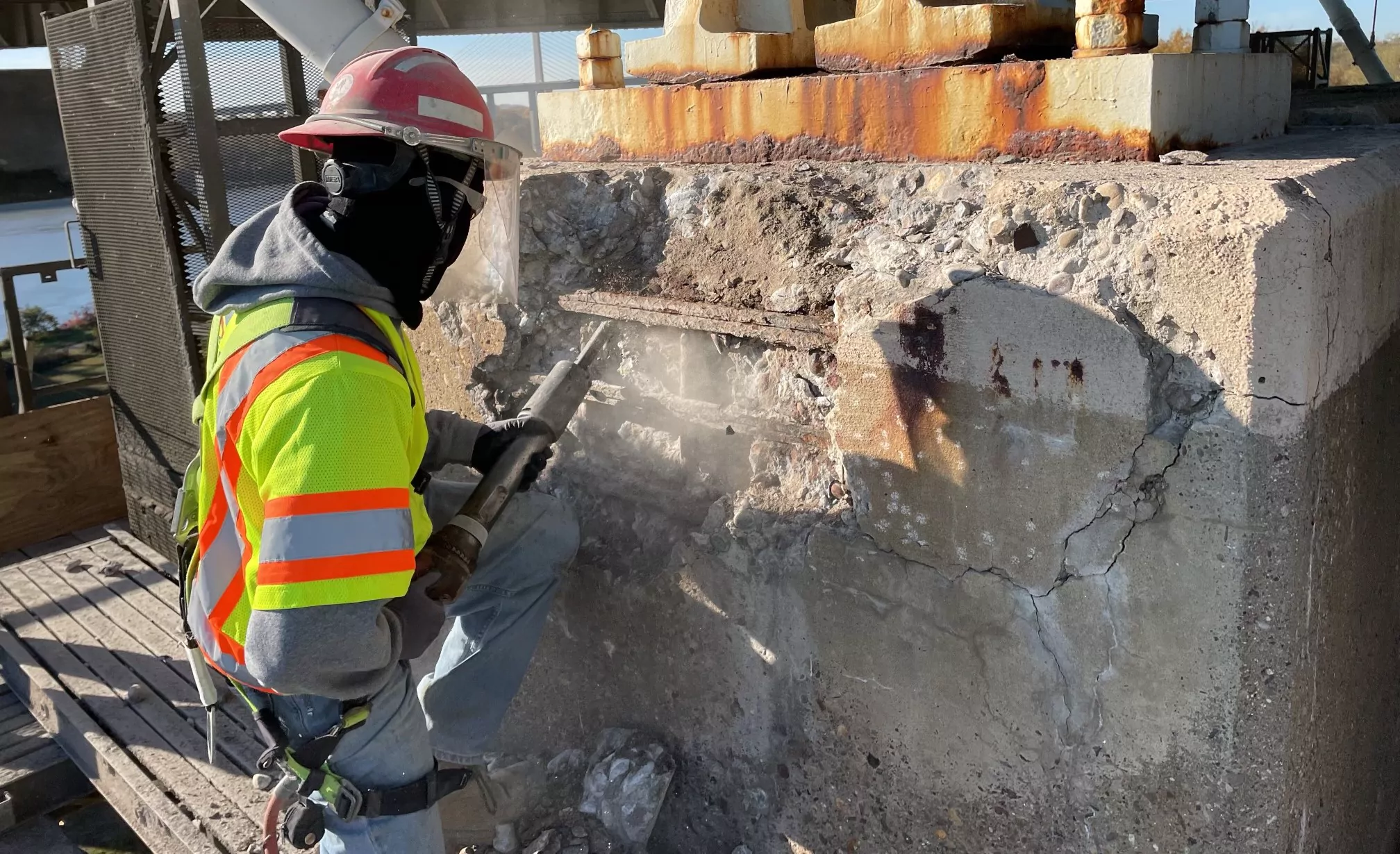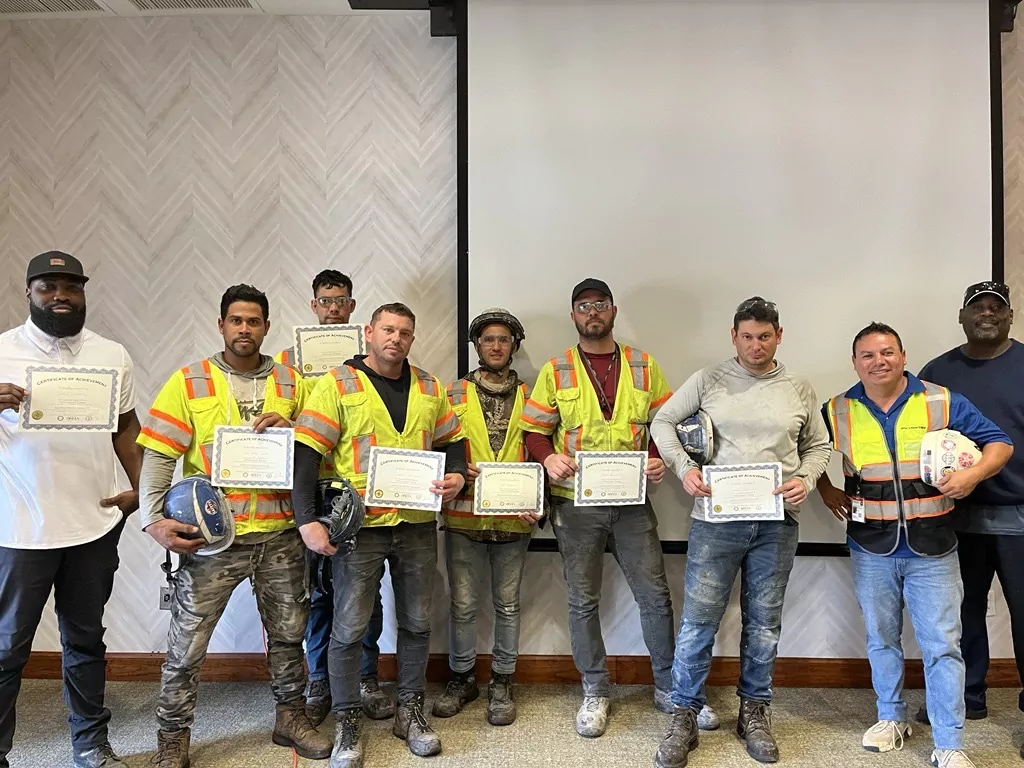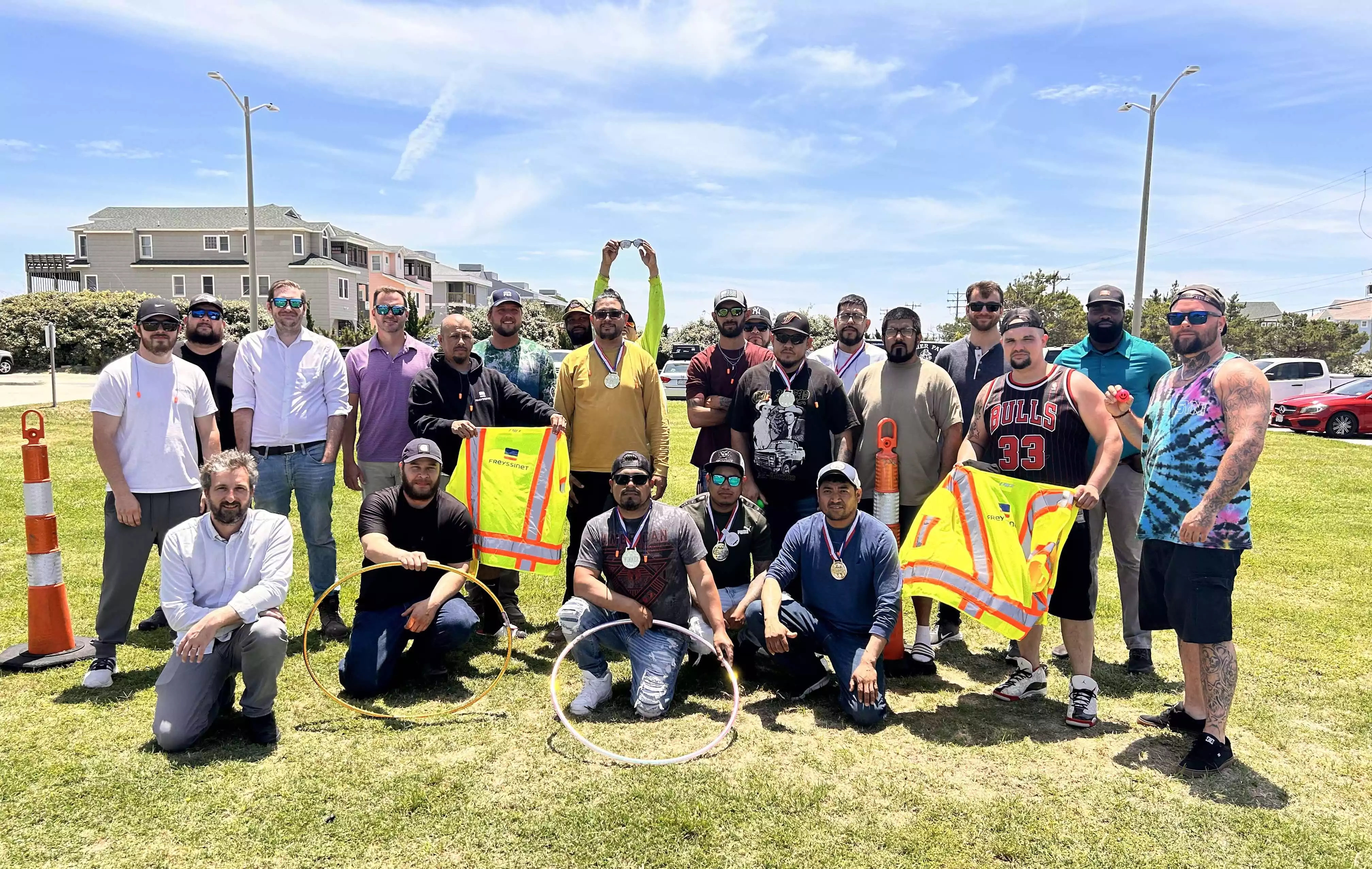Our Commitment to Health and Safety
Integrate safety and risk management at every level
Strengthen our commitment to safety through targeted training
Building a deeply embedded safety culture
Safety and
Risk Management

The “Zero Accident” objective is applicable to all personnel working at our sites, including Freyssinet employees, temporary staff, and subcontractors. We apply our safety and risk management standards consistently across all entities, even when these standards are stricter than local regulations.
- Golden Rules must be respected at all our sites and while traveling. The rules include topics such as safety briefing, use of personal protective equipment, conditions for using the telephone, working at height, etc.
- Technical Safety Standards for activities involving high risks like working at height, working near traffic, lifting operations, use of electrical equipment, and more.
- Safety Managers are connected to operational management at various levels within the organization. Their mission is to provide advice and technical expertise, identify risks, and assist in problem resolution.
In order to involve employees, a number of tools and routines are used throughout the life of projects:
- Safety in Design. Safety is part of the R&D objectives. When we submit our tenders, we also detail its integration into our clients’ projects and the conditions for its implementation.
- PreTask meetings. The operating procedures defined by the design and construction engineers are finalised with the site management and shared with the teams.
- PreStart meetings. A briefing takes place every day, before each shift: to identify any discrepancies between what has been planned and the site conditions, to agree on any risks and their control.
- STOP authority: Every operator has the right and responsibility to stop an activity if they believe safety conditions are not being met. They should immediately inform their superior without fear of repercussions.
- Managerial safety visits: Regularly organized at the sites, they aid in monitoring, important dialogue, and continuous improvement.
Targeted Training

All new employees undergo safety training. They also participate in annual thematic awareness-raising actions, such as Safety Week, which have engaged our teams since 2014 and are a vital part of enhancing safety awareness at Freyssinet.
Managers are the primary figures responsible for safety and must be exemplary, committed, and proactive. A “Managing through Safety” training course designed specifically for our leaders has been implemented and instilled.
Safety strategies vary based on different responsibilities. For instance, our operational managers are trained to handle unforeseen events while considering safety in the necessary trade-offs between quality, deadlines, costs, and risks. Our site supervisors are instructed to incorporate safety measures as early as possible in the construction process. We place a strong emphasis on ensuring that site managers implement safety protocols effectively.
Safety Culture

- Processes are established to ensure that any inappropriate operating procedures and potentially serious events (HiPOs) are communicated to management and addressed appropriately.
- The sharing of best practices is encouraged. HiPO events are systematically reviewed in debrief sessions between the involved staff and their management.
The trust of our employees is extremely important to us. Therefore, the managers of each of our entities work to cultivate a spirit of cooperation, improve the quality of communication, acknowledge the right to make mistakes, and encourage safe behavior and best practices before resorting to constraints or sanctions.
The dynamics of work groups are just as important as individual behavior. To address this, ambitious programs have been developed that focus on managerial attitudes and behaviors related to safety. These programs are implemented through training sessions and collective workshops.
We rely on our partnership with the ICSI (Institute for an Industrial Safety Culture) to leverage the latest research in safety. This collaboration helps inform our managers, leaders, and safety trainers through various educational resources, including videos, online training sessions, webinars, and case studies.